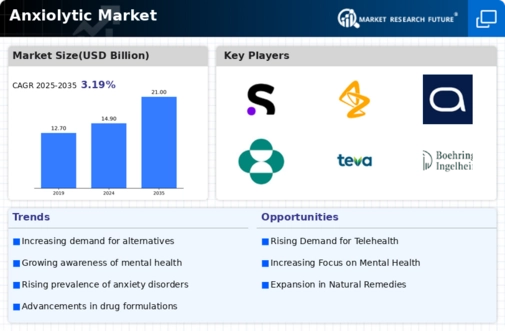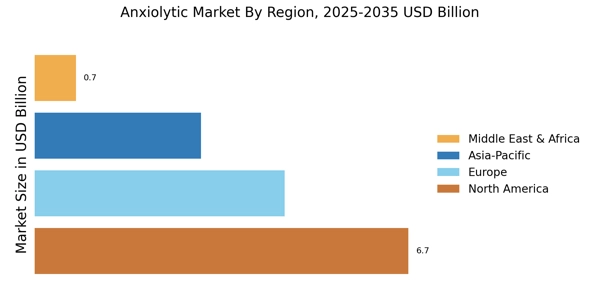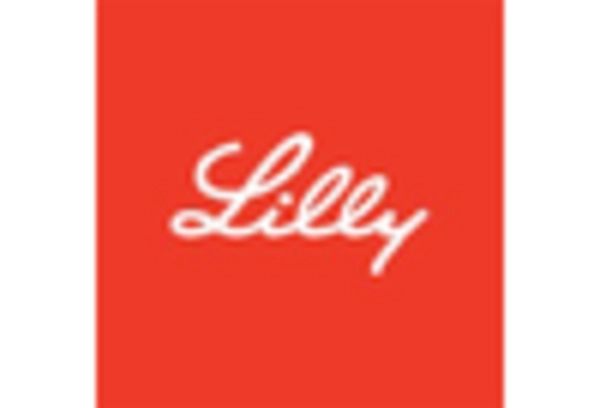Integration of Telehealth Services
The Anxiolytic Market is witnessing a transformation with the integration of telehealth services. The convenience of remote consultations and therapy sessions has made mental health care more accessible to individuals suffering from anxiety disorders. This shift towards digital health solutions is likely to enhance patient engagement and adherence to treatment plans. As telehealth continues to gain traction, it is expected to drive the demand for anxiolytic medications, as healthcare providers can more effectively monitor and adjust treatment regimens. The Anxiolytic Market stands to benefit from this trend, as it aligns with the growing preference for personalized and accessible healthcare.
Rising Prevalence of Anxiety Disorders
The Anxiolytic Market is experiencing growth due to the increasing prevalence of anxiety disorders worldwide. According to recent data, anxiety disorders affect approximately 264 million individuals, leading to a heightened demand for effective treatment options. This rising incidence is prompting healthcare providers to seek innovative anxiolytic solutions, thereby expanding the market. The growing recognition of mental health issues has led to increased funding for research and development in the Anxiolytic Market, fostering the introduction of new medications and therapies. As awareness continues to rise, it is likely that more individuals will seek treatment, further driving market expansion.
Advancements in Pharmaceutical Research
The Anxiolytic Market is significantly influenced by advancements in pharmaceutical research. Recent innovations in drug formulation and delivery systems have led to the development of more effective anxiolytic medications with fewer side effects. For instance, the introduction of novel compounds and the repurposing of existing drugs have shown promise in treating anxiety disorders. This research-driven approach not only enhances patient outcomes but also attracts investment into the Anxiolytic Market. As pharmaceutical companies continue to invest in research, the availability of diverse treatment options is expected to increase, catering to a broader range of patient needs.
Growing Acceptance of Alternative Therapies
The Anxiolytic Market is also influenced by the growing acceptance of alternative therapies for anxiety management. Many individuals are seeking complementary approaches alongside traditional pharmacological treatments. This trend includes the use of herbal supplements, mindfulness practices, and cognitive behavioral therapy. As patients become more informed about their treatment options, the Anxiolytic Market may experience shifts in demand, with a potential increase in the use of non-pharmaceutical interventions. This diversification of treatment options could lead to a more holistic approach to anxiety management, ultimately benefiting the overall market.
Increased Investment in Mental Health Initiatives
The Anxiolytic Market is bolstered by increased investment in mental health initiatives. Governments and private organizations are recognizing the importance of mental health and are allocating resources to improve access to treatment. This financial support is facilitating the development of new anxiolytic therapies and enhancing existing treatment frameworks. As funding for mental health programs rises, the Anxiolytic Market is likely to see a surge in demand for effective medications. This trend not only addresses the needs of individuals with anxiety disorders but also promotes a broader societal understanding of mental health issues.


















Leave a Comment